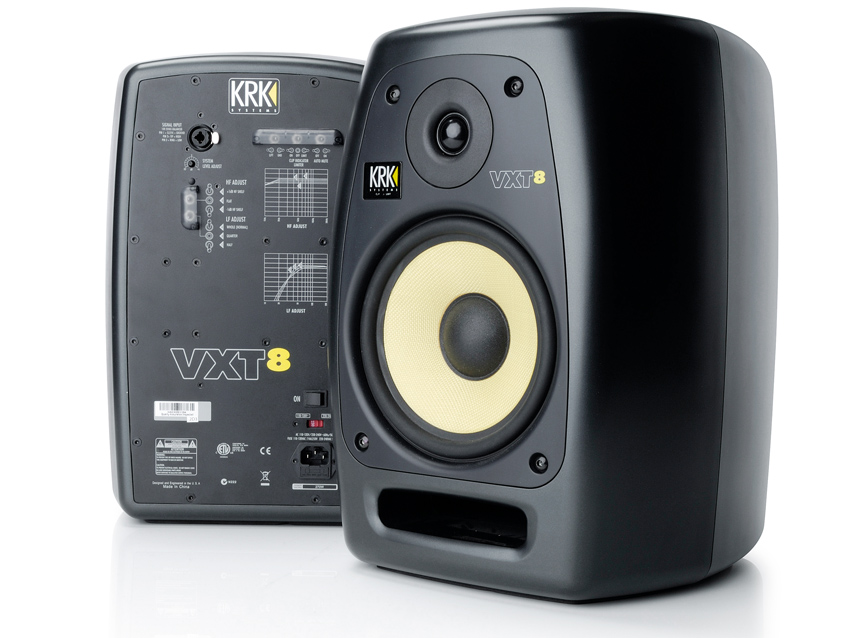MusicRadar Verdict
These are top quality monitors with a tight and usable mid-range and powerful low-end.
Pros
- +
Big sound. Detailed mid-range. Incredibly loud.
Cons
- -
Quite bulky. You'll need a big room to get the best out of them.
MusicRadar's got your back
KRK's compact VXT4 studio monitors have good overall balance, but inevitably the 4" woofers hamper their bass delivery a little. With the larger VXT8, however, we´re guessing that bass isn't going to be that much of an issue.
Overview
As you would expect, the VXT8 looks just like a bigger version of its sibling, but is also reminiscent of KRK's flagship Exposé monitor. The smooth finish, ABS structural foam cabinet, concealed amplification and yellow Kevlar cones give this monitor a modern feel that´s far removed from a traditional square box model.
One thing that may not be immediately apparent from the photos is quite how big these monitors are. At just over 43cm high and around 18.6 kilos apiece in weight they should pack a serious punch. With 120W of amplification on the woofer (60W on the tweeter) there's enough power under the hood to make them perfect for midfield use.
It's probably a good thing that the VXT8 includes both limiter and clip indicator circuitry and you can select either of these (or not) round the back. Also on the back you'll find a power switch and socket, combined TRS/XLR input, amplifier level (-30dB to +6dB) and the HF and LF adjustment switches.
KRK has kept the EQ settings pretty simple, with the HF offering a gentle +/-1dB shelving EQ above 2kHz. The LF control, on the other hand, is a three-position adjustable roll off labelled Whole, Quarter and Half. This is designed to indicate the space you're using the monitors in, Whole being the biggest and Quarter the smallest.
Finally, the VXT8 also has an optional Auto-Mute setting that puts the monitors in standby after 20 minutes inactivity.
Want all the hottest music and gear news, reviews, deals, features and more, direct to your inbox? Sign up here.
In use
Given the size of these monitors, I think you'd struggle with them in a programming room situation. That said, they sound perfectly good at lower levels, and we found that the Quarter LF setting curtailed the bass enough to use them in a smallish space. However, moving them into a bigger room enabled us to let them off the leash a bit, and here, the full bass extension proved a very welcome addition.
Sonically the VXT8s exhibit an upfront mid-range that seems consistent across most KRKs. In use, we didn't feel the need to adjust the HF setting, but when we did, it had less impact than we thought it might.
In fact, we found the top-end on the VXT8s to be non-fatiguing - it works well with the more upfront mid-range.
Finally, we must comment on how loud these monitors are: we really had to go some to get the limiters to kick in. Good news, but maybe they should carry a health warning.
Overall the VXT8s produce a big lively sound without sounding too out of control, and the accurate mid-range is very welcome if you're mixing with them. But to get the most out of these speakers, you do need to give them some extra breathing space.
Jon is a London based platinum award winning mixer, producer, composer and club remixer with a diverse CV that spans dance, pop, rock and music for media. He’s also a long term contributor to MusicRadar's music technology tutorials and reviews. Whether working alone or collaborating he usually handles final mixdowns, so you’ll also find MusicRadar peppered with his handy mixing tips.

